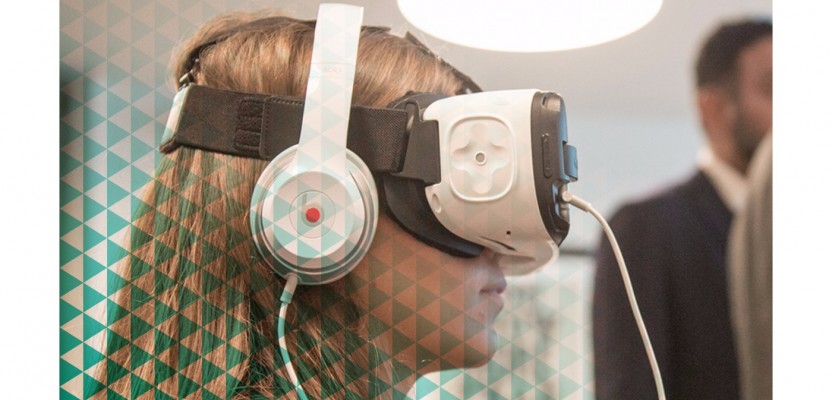Imagine a spectrum, a story telling spectrum.
At one end of it there is a linear, directed, narrative experience. The viewer, doesn’t have any choice or interaction. It’s a passive experience. That’s film as we knew it. Engaging, emotional, inspiring and hugely popular, increasingly so, but passive nevertheless.
At the other end of this spectrum, there is a “sandbox” experience. The viewer has complete freedom to move and see and do what they want. The authorial voice of the creator is virtually absent in this experience, the viewer is also the storyteller, using the creator’s parameters and elements to build their own narrative.
As the moving image medium explodes (into virtual reality, augmented reality, motion controlled experiential and others yet to be invented), it’s important to understand that the experience you create will sit somewhere along this spectrum.
In essence, as we give over more choice through interactivity we have less control over the narrative experience and therefore the delivery of the messaging. But that’s a good thing and should be embraced. As communicators we can decide how much control to relinquish depending on the purpose of our communication, the experience we want to create, and how much work we’re willing to ask our audience to do for themselves.
It is all too easy to think that by introducing interactivity into a communications project we dilute the storytelling power of moving image. But the reality is that, as with any project, if we’re clear about our messaging, aims and objectives, the story and message can be just as carefully crafted using these new tools and mediums.
In fact, it is even more important to curate the content and experience in an interactive environment, otherwise we’ll alienate our audience within moments of them entering it. That’s not to say that there isn’t merit in letting our audience chose their path or journey, it’s just that we have to make sure that the reward is worth their effort.
So let’s explore how some of these new opportunities sit along the narrative/interactive spectrum and how to get the best from them:
Augmented reality (AR)
This can be used really effectively in circumstances where we hand over control to the audience completely. It can be a really effective tool to deliver information heavy or technically complex communications in a way that enables our audience to find out what they want or need to know for themselves: think technical training, product sales or bringing building blueprints to life as examples. In these experiences the opportunities for traditional, linear storytelling can be limited, but we can use the tools and craft of the moving image to add richness to the experience we’re offering (and audiences are demanding).
Virtual reality (VR)
This is where there is real divergence and (therefore possible tension) between narrative and interactive. At one extreme is the creation of a completely free virtual world that you can let your audience explore (as outlined above), and at the other is 360° video where you offer an experience for your audience akin to ‘looking around on rails’ (travelling through a linear space within a defined timeframe but with the option to look around you to see more of what is happening).
It’s easy to see how 360° video is an easy entry point to virtual reality for communicators and audiences alike. There’s a degree of familiarity with the experience and we’re not asking too much of our audience – we construct the story and journey for them and they choose what to look at or focus on as they move along our ‘rails’. We’ll still be the architect of the narrative, and by using careful editing and sound design we can encourage the audience to look around them and at what we would like them to see, creating a rich but still reasonably passive linear experience.
This immersive form of film-making is already gaining traction and with the growing availability of viewing devices, these immersive experiences are increasingly accessible. They’re at their most worthwhile when they’re giving audiences the opportunity to experience something in a way that feels more first-hand than they would be otherwise able to do – think charities showing people their activities in dangerous or inaccessible places, extractive industries training people in what to do in an emergency (from the safety of an office in the UK), or holiday tour operators helping customers to feel like they’re already there.
If we go to the other end of the spectrum with VR and place the control of the narrative seemingly entirely in the hands of the audience, make no mistake, their experience still needs to be carefully crafted and curated. We will need to think about where they might spend their time (and where we want them to dwell), how to reward them with rich experiences, and how to entice them into finding out what we want them to know.
There’s a lot we can learn from the games industry to help us create these experiences, from use of light and space to draw the eye, to directional sound design making people turn and look, there are many tricks and techniques that help the audience navigate and explore an interactive experience. And, like any story, it needs a beginning (a gentle transition into the virtual world), middle (rich and rewarding experiences), and end (a satisfying conclusion, a feeling that they have learnt something or had an experience they may otherwise not have had).
Regardless of the approach we take, as long as we’re clear on our purpose, messaging and audience, these tools give us the power to craft and tell our stories in new and ever more powerful ways.



